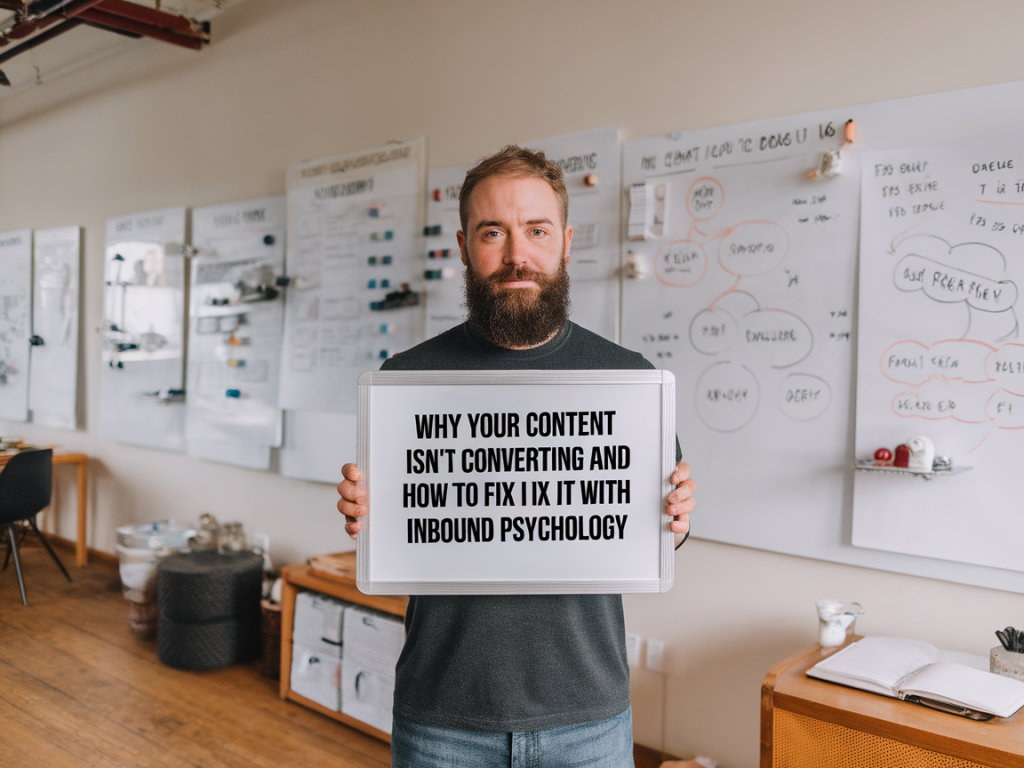We’ve all been there. You’ve poured your heart and soul into a blog post, landing page, or email campaign. You’ve done keyword research, optimized the meta tags, included internal links, and maybe even dabbled in a bit of storytelling. But despite all that effort… crickets. Your traffic may trickle in—maybe even surge—but conversions? Minimal. So what gives?
Hi, I’m Élodie Dupont, and here on Inbound SEO, I’m obsessed with understanding not just what works digitally, but why it works. And when it comes to content that doesn’t convert, I’ve discovered something critical: the missing link is usually psychology. More specifically, inbound psychology.
What is Inbound Psychology?
Inbound psychology is the blend of behavioral science and marketing strategy. It’s about aligning your content with how people make decisions, build trust, and take action. Inbound marketing isn’t just about attracting eyeballs—it’s about attracting the right people, nurturing them with empathy, and guiding them to a solution that genuinely helps them.
If your content isn’t converting, chances are you’re presenting information, but not connecting emotionally. You’re educating, but not persuading. That’s where the shift to a more psychologically-informed strategy can make all the difference.
You're Talking to Everyone and No One
Let me be blunt: generic content kills conversions. If your message could apply to any reader, you’re not speaking clearly to your audience.
I learned this the hard way early in my career—I wrote what I thought people wanted to hear, using well-researched SEO tactics, but my bounce rates were high and conversions flatlined. The moment things changed? When I began writing as if I was having a one-on-one conversation with my ideal client.
Here’s what I recommend:
- Create audience avatars. Not just demographics. I’m talking about goals, fears, objections, and motivations.
- Use language your audience uses. Study comments, reviews, forums—immerse yourself where your audience hangs out online.
- Address pain points and aspirations directly. Make readers feel seen and understood.
You’re Missing the Emotional Component
People make decisions emotionally and justify them with logic. That’s a fact backed by neuroscience. But too many marketers (even great ones!) focus strictly on logic: features, specs, benefits. And while those matter, they won’t trigger action on their own.
Instead, tap into emotions. Ask yourself:
- What’s at stake for my audience if they don’t solve this problem?
- What underlying fear or desire is really driving their behavior?
- How does my content make people feel?
For example, if you’re selling a time management tool, don’t just talk about “increased productivity.” Talk about getting home in time for dinner or finally feeling in control.
One of my favorite brands doing this masterfully is Notion. Their content and product design don’t merely scream "productivity." They whisper ”keep your mind clear and your life in order”. That's emotional resonance.
Your CTAs Aren’t Human Enough
This is one of my pet peeves. A great piece of content leads you through a journey, priming you for action—and then throws in a soulless CTA like "Click here". Let’s fix that, shall we?
Your Call To Action should feel like a natural next step in a conversation. That’s how we build journeys—not transactions. Here's a quick side-by-side breakdown:
| Standard CTA | Human-Focused CTA |
|---|---|
| Click here to learn more | Curious what this looks like in practice? Let me walk you through it. |
| Buy now | Grab your spot and let’s fix this together |
| Subscribe | Join the 5,000+ marketers growing smarter with me each week |
See what I mean? The more you make your CTA feel personal, actionable, and empathetic, the better your conversions will be.
You're Not Building Enough Trust
Conversion is trust in action. It’s someone saying: “I believe you can help me.” But trust doesn’t come easy—especially in today’s saturated digital landscape.
So how do we build it? Through transparency, credibility, and consistency. Some of my go-to methods:
- Include proof: Case studies, testimonials, user stats.
- Be transparent: Tell stories of your struggles (people relate more to the messy middle than the perfect outcome).
- Offer real value upfront: Think checklists, frameworks, mini-courses.
I’ve had amazing feedback when I’ve shifted from "teasing" content to actually solving part of the user’s problem for free. It shows you’re not afraid to give before you get.
You're Ignoring the Reader’s Journey
Too often we push content like a bullhorn—shouting the same message to every visitor. But you need to meet readers where they are in their buyer journey. A new visitor researching a problem isn’t ready for your pricing page. They need to be nurtured.
Use content stages tailored to awareness levels:
- Top-of-Funnel (Awareness): Blog posts, YouTube videos, shareable guides.
- Middle-of-Funnel (Consideration): Case studies, in-depth PDFs, webinars.
- Bottom-of-Funnel (Decision): Product comparisons, demos, testimonials.
I often use email sequences to guide the journey—segmenting based on behavior and interest. Tools like ConvertKit and ActiveCampaign are great allies here.
How I Apply Inbound Psychology in My Own Work
At Inbound SEO, every piece of content I create goes through this filter:
- Am I speaking to one person, not an audience of everyone?
- Does this content stir an emotion as well as inform?
- Have I shown, not just told?
- Is my ask clear, human, and well-timed?
- Have I earned the reader’s trust—or just demanded attention?
Blending inbound marketing with behavioral insights has completely transformed not just my content—but the results it drives. And it’s something I teach my clients and community every week.
